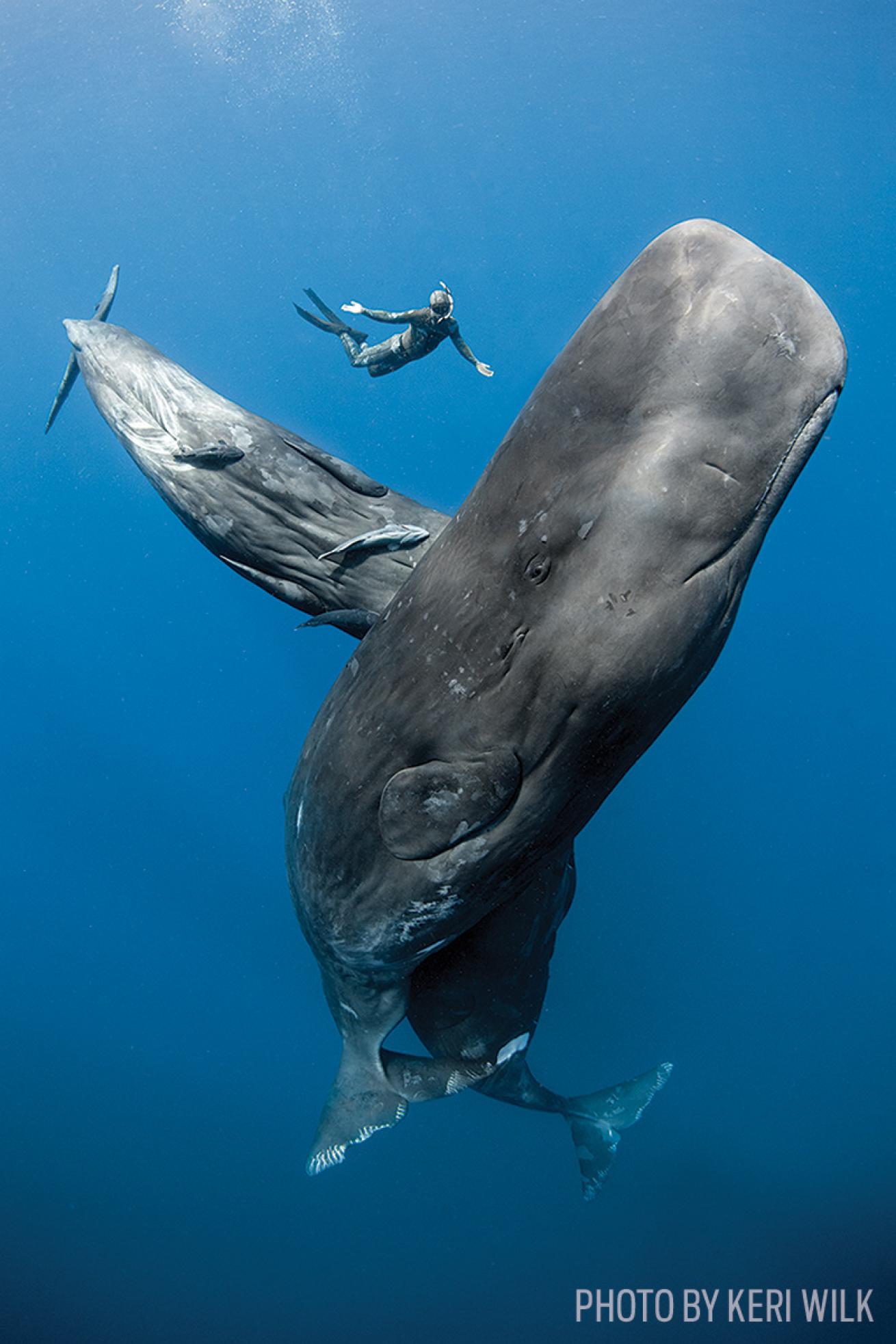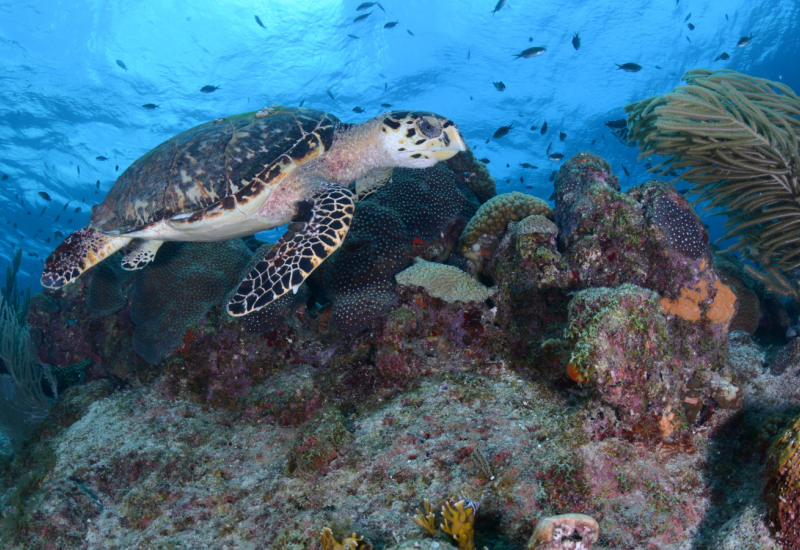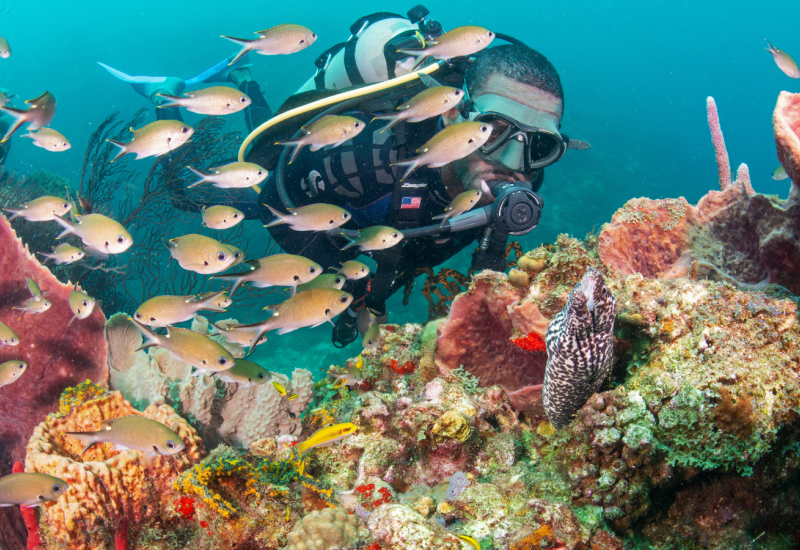The Best Places to Swim with Sperm Whales

Keri WilkSperm whales dive nearly 1.5 miles down to make prey of other sea monsters, like giant squid.
The eponymous white whale in Herman Melville’s Moby Dick was a particularly fiendish fictional version, but the real thing is no less powerful or mysterious. They are the largest toothed whales and the world’s biggest apex predators, reaching more than 60 feet long. Unlike baleen whales, which can grow longer, sperm whales don’t cruise around filter feeding, scooping up mouthfuls of microscopic krill. Instead, they dive deep — really deep, nearly 1.5 miles down — into the inky blackness beyond the sunlight, where they stalk, fight, kill and devour other sea monsters, like giant squid.
“The sperm whale is one impressive alien beast. I’ve been entranced by Melville’s monster ever since I was a kid listening to my dad read Moby Dick,” says Brandon Cole, an underwater photographer and cetacean expert who specializes in swimming with and photographing sperm whales. “Being sized up by the largest carnivore on the planet is an experience not soon forgotten. You can hear — and feel — the cetacean’s sophisticated sonar at work, pinging you with a series of buzzing clicks, echolocating to see your insides, comparing your anatomy with that of a squid.”
Not only is the sperm whale a top predator, it also has the largest brain of any animal on Earth, weighing about 17 pounds — not surprising once you see its mammoth, block-shaped head. These can be extremely curious creatures and, like Moby Dick, they’ve been known to use their sheer size to defend themselves by ramming boats. In fact, the book was based on the true story of the Nantucket whaling ship Essex, which was attacked and sunk by a sperm whale in the South Pacific.
“Being sized up by the largest carnivore on the planet is an experience not soon forgotten."
Unfortunately, sperm whales have been heavily targeted by whalers. Their name comes from a substance called spermaceti, found in their heads. A large whale can have 500 gallons of this waxy liquid, thought to either help them with buoyancy, echolocation or both, but to whalers it was a valuable commodity used in things like lamp oil and cosmetics. Today the whales are protected, though still listed as a vulnerable species.
Encounters with sperm whales are rare, even though they range throughout the world’s oceans. “I never thought I’d have the chance to encounter one in the flesh,” Cole says. “I first saw them in the Azores, then again in New Zealand, and now off the green shores of Dominica. Hopefully, I can add Sri Lanka to the list some day.”
Cole says these are the world’s hot spots for sperm whales, and of those, Dominica is the most reliable. “During the winter, dozens of sperm whales — mostly adult females and their off-spring — hang around the deep blue waters there, feeding, nursing their young and socializing,” Cole says. “But a permit is required to swim with them, so you must go with licensed, permitted operators, and only snorkeling is allowed.”
Sperm Whale Fast Facts
- Max Length: 60 feet
- Max Weight: 45 tons
- Life Span: Between 50 and 70 years
- Status: Vulnerable
- Fun Fact: To achieve depths of over 9,500 feet, a sperm whale can hold its breath for more than 90 minutes.










